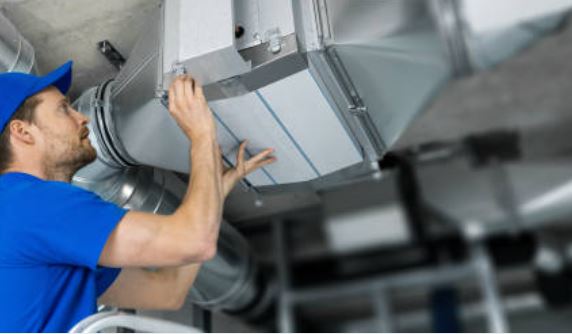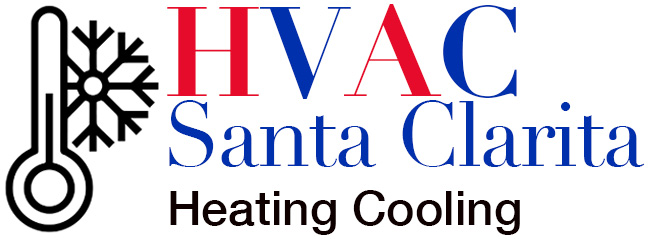A residential gas furnace is a crucial part of most homes, especially in regions where winters can be harsh. When winter hits hard, people with gas furnace problems often look for reliable “furnace or ac repair near me,” to help them keep their homes comfortable and cozy.

If you are looking to keep a perfectly functioning residential AC or furnace, we have got you covered with our furnace and AC repair Santa Clarita.

call 661-888-0248
Contact us 24/7 for HVAC services!
But before we get into the details of this … what exactly is a residential gas furnace, and how does it work? In this guide, we take a deep dive into the world of residential gas furnaces, what they are, some problems facing with the units, and the critical factors you should consider when choosing one for your home.
Ready? Let’s get right in.
What is a Residential Gas Furnace?

A residential gas furnace is a heating system that operates on natural gas or propane, a cost effective and efficient energy source. This type of furnace is commonly found in many residential houses because of its ability to provide consistent warmth throughout the home.
The primary purpose of a residential gas furnace is to heat the air and distribute it through a network of ducts, effectively maintaining a comfortable temperature indoors.
How Does a Residential Gas Furnace Work?
The operation of a residential furnace can be broken down into several key steps:
- Combustion: The furnace’s burner ignites natural gas or propane to produce heat.
- Heat Exchanger: The heat produced from combustion is then transported to the heat exchanger, which warms up the air.
- Blower: The furnace’s blower fan pushes air over the heat exchanger, where it absorbs the warmth.
- Distribution: The heated air is distributed through the duct work in your home.
- Ventilation: Combustion byproducts, such as carbon (II) oxide, are safely vented outside.
Factors to Consider While Choosing a Residential Gas Furnace
Selecting the right residential furnace for your home is a decision that should not be taken lightly. Planning on installing a furnace? Here are the key factors to consider:
Size and Capacity
The size of the heating is a crucial factor to consider when installing both a residential and commercial gas furnace. A furnace that’s too small for your house won’t heat your home effectively, while one that’s too big can lead to inefficiencies and higher energy bills. It’s important to consult with an HVAC tech to determine the correct sizing for your specific needs.
Looking for a gas furnace installation Santa Clarita? Feel free to call us for size calculation.
Energy Efficiency
Energy efficiency is a significant consideration, directly impacting your long-term operating costs. Look for a heating system with a high Annual Fuel Utilization Efficiency (AFUE) rating. The higher the AFUE, the more efficient the furnace converts fuel into heat.
Fuel Type
Residential gas furnaces operate on natural gas or propane. Consider the availability and cost of these fuels in your area when choosing a furnace. It’s important to select a furnace that aligns with your budget and local resources.
Features and Technology
Modern furnaces have various features and technologies, such as programmable thermostats, variable speed blowers, and zone heating. These features can enhance your comfort and energy efficiency, so it’s worth exploring them.
Reliability
Choose a furnace from a reputable manufacturer and ensure it comes with a good warranty. Regular system maintenance is also essential to ensure your furnace operates efficiently and lasts many years. Additionally, remember that older furnaces are prone to breakdowns.
Cost
Set a budget for your residential HVAC system, factoring in not only the initial cost but also the long-term operating expenses such as gas furnace repair.
While it’s tempting to cut corners, investing in a high quality, efficient furnace can save you money in the long run.
Environmental Impact
Consider the environmental impact of your choice. An energy efficient heating system, including an oil or propane furnace, produces fewer greenhouse gas emissions. This is good for the planet and for your wallet.
Signs of a Malfunctioning Residential Gas Furnace

A gas furnace is an integral part of your home’s heating system. It keeps your living space warm and comfortable during the cold winter months. However, like any mechanical system, gas furnaces can experience malfunctions affecting performance. Let’s now delve into the signs of malfunctioning gas furnaces. Recognizing these signs is crucial for maintaining the efficiency and safety of your heating systems.
Unusual Noises
One of the most obvious signs that your gas furnace is experiencing issues is the emergence of unusual noises. If you hear rattling, banging, or squealing sounds emanating from your furnace, switch it off and start a troubleshooting process.
These noises could indicate loose or damaged components within the furnace, such as a broken blower motor or fan. Ignoring these weird sounds can lead to further damage and reduced efficiency. We, therefore, recommend that you call for emergency furnace repair in such cases to avoid unexpected breakdowns.
Inconsistent Heating
Do you have cold spots throughout the house?
A malfunctioning gas furnace often leads to inconsistent heating throughout your home. You might notice some rooms are warmer than others, or the temperature fluctuates without manual adjustments. Inadequate heating can be attributed to problems with the thermostat, ducts, or the furnace itself. Addressing this issue ensures your home stays comfortably heated.
Call us today for 24 hour furnace repair services if you notice your system is inconsistently heating your house.
Higher Energy Bills
An unexplained spike in your energy bills can be a red flag for a malfunctioning gas furnace. When your furnace is not operating efficiently, it works harder to produce the desired heat, consuming more energy. This results in increased energy costs. Regular furnace maintenance and prompt repairs can keep your energy bills in check.
Frequent Cycling
Frequent cycling, where the furnace turns on and off too frequently, is another sign of trouble. This can be due to a clogged and dirty air filter, improper installation, a malfunctioning thermostat, or issues with the blower motor. Continuous cycling not only strains the furnace but also makes your home uncomfortable due to inconsistent heating.
Yellow or Flickering Pilot Light
A healthy gas furnace should have a steady blue pilot light. If you notice that the pilot light is yellow and flickering, it could be a sign of a gas combustion issue. A yellow or flickering pilot light may indicate the presence of carbon monoxide, a potentially dangerous gas. In this case, it’s crucial to turn off the furnace immediately, ventilate your home, and seek professional assistance.
We’re a professional heating company Santa Clarita ready to dispatch our professionals whenever you experience such safety problems.
Strange Odors
A malfunctioning gas furnace can produce unusual odors. If you detect a persistent, foul, or musty smell coming from your furnace, it could be due to various issues, such as a dirty or clogged air filter, gas leaks, or the accumulation of dust and debris. These odors can be not only unpleasant but also harmful to your health. Immediate action is necessary to rectify the problem.
Contact HVAC Santa Clarita when you face any of the above problems.
How to Improve the Efficiency of Your Residential Gas Furnaces

Now that we’ve discussed the signs of a malfunctioning gas furnace, it’s equally important to explore how to improve the efficiency of your furnace. A well maintained furnace not only keeps your home warm but also helps you save on energy costs.
Regular Maintenance
Regular gas furnace maintenance is the key to ensuring your gas furnace operates efficiently. This includes cleaning or replacing air filters, lubricating moving parts, and inspecting the system for wear and tear.
Scheduling annual maintenance with a professional technician can go a long way in preventing breakdowns and optimizing performance. Call us today for such heating services and gas furnace cleaning.
Programmable Thermostat
Buying a programmable thermostat is a smart move to improve your furnace’s efficiency. With a programmable thermostat installed, you can set specific temperature schedules, ensuring your furnace only runs when necessary. This reduces energy consumption and minimizes wear and tear on the system.
Proper Insulation
Proper home insulation is important to prevent heat loss. Check for gaps, cracks, and poor lining in your home. Sealing these gaps and ensuring adequate insulation will help your furnace work more effectively, as it won’t need to cover for heat loss.
Upgrade to High-Efficiency Furnace
Upgrade to a high efficiency gas furnace if your current system is outdated. High-efficiency heating systems are designed to use less energy while delivering better heating performance. Although the initial investment may be higher, the long-term energy savings make it a wise choice. If you have a high upfront budget, we recommend that you go for an Energy Star AC or furnace; it will save you much more in the long run.
Are you considering an upgrade? You may want to check out heat pump services as it is a great choice to consider.
Ducts Inspection
Have your duct work inspected for leaks and blockages. Leaky ducts can result in significant heat loss, reducing the overall efficiency of your furnace. Properly sealed and insulated ducts can help distribute heat evenly throughout your home.
FAQs – Residential Gas Furnace
- Is it cheaper to have a natural gas or oil furnace?
The cost effectiveness of gas or oil furnaces depends on your location and usage. Generally, natural gas tends to be cheaper, but oil furnaces may have lower installation costs. It’s best to consider your specific needs and local energy prices to make an informed choice.
- How much does a new residential gas furnace cost?
The cost of a new furnace varies based on factors like size, efficiency, brand, and installation. On average, you can expect to pay between $2,500 and $6,000 for the furnace itself(1), and installation costs can range anywhere from $1,500 to $3,000. It’s advisable to obtain multiple quotes from HVAC professionals for an accurate estimate.
Call us today for free quotations for both residential and commercial HVAC systems.
- Which company is ideal for the installation and maintenance of heating systems in Santa Clarita?
Several reputable HVAC companies serve Santa Clarita. HVAC Santa Clarita is a great find! Experienced techs and unbeatable prices are some factors that make the company popular in the region and beyond. Contact HVAC Santa Clarita to get a quote for your cooling and heating needs.
Customer satisfaction is our forte, so rest assured that you will get nothing short of top notch quality.
Final Thoughts
A residential gas furnace is a reliable and energy-efficient way to keep your home warm during the chilly seasons. It’s, therefore, a wise investment for any home as it generates warmth and comfort during the coldest months of the year. Contact us to install, maintain and repair AC and heating systems in Santa Clarita.

call 661-888-0248
Contact us 24/7 for HVAC services!
Our Address is
HVAC Santa Clarita
26893 Bouquet Canyon Rd
Santa Clarita CA 91350
Opening hours
Monday 8 am – 8 pm
Tuesday 8 am – 8 pm
Wednesday 8 am – 8 pm
Thursday 8 am – 8 pm
Friday 8 am – 8 pm
Saturday 8 am – 8 pm
Sunday 9 am – 5 pm
Sources
https://www.forbes.com/home-improvement/hvac/how-much-does-a-gas-furnace-cost/
